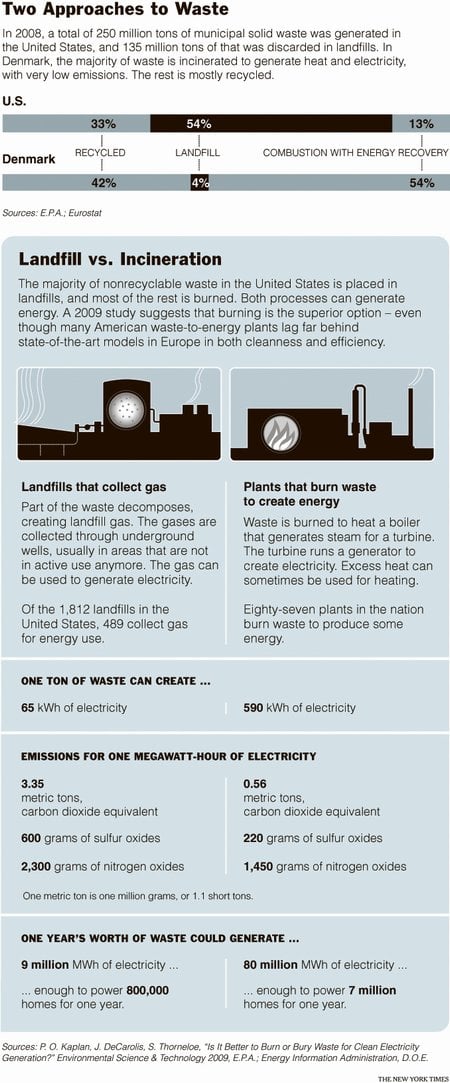Among my grandmother’s many expressions, this was one of the better ones. I must’ve taken it very much to heart, as leftovers get eaten in our household and I’m pretty scrupulous about recycling. I’ve written here numerous times about waste management issues, including referencing my modest proposal for managing New York City’s 25,000 tons a day of municipal solid waste, Urban Gold.
I was on the phone early this week with Monem Alyaser, the CEO of Enventix, a Silicon Valley concern that is trying to advance the low-cost conversion of household and farm waste to biochar and energy. We were talking about the many opportunities both in advanced economies and in the developing world to manage waste infinitely more efficiently and productively.
The next morning, lo and behold, there was a great article by one of my favorite writers, Libby Rosenthal, on how the Danes and others are using a high tech process of energy recovery with their municipal solid waste. The Danes are combusting 54% of their garbage and recycling 42%. The remaining 4% is going to landfills. The US, by contrast, is recycling 33%, combusting 13% and sending a whopping 54% to landfills. Methane, not incidentally, with a global warming potential 25 times that of carbon dioxide, escapes from landfills. Methane, as new studies indicate, is a far greater component overall of what’s driving dangerous anthropogenic interference (DAI) with the climate system than was previously thought. That’s one reason why international programs like Methane to Markets are so critical.
The “quote of the day” at the “NY Times” came from Rosenthal’s article. Nicholas Themelis, associated for years with Columbia University’s Earth Engineering Center, expressed his frustration at the unwillingness of environmentalists in New York City to even look at these sorts of technologies for waste management. “It’s so irrational; I’ve almost given up with New York. It’s like you’re in a village of Hottentots who look up and see an airplane – when everybody else is using airplanes – and they say, ‘No, we won’t do it, it’s too scary.'”
My experience with what were known as “resource recovery” plants 20 years ago here in the Big Apple was that the City government was trying to ram these down people’s throats. It would be fabulous if we could navigate the Scylla of the knee-jerk dislike for waste-to-energy facilities in some quarters and the Charybdis of the ham-fisted way that the City often does its community outreach. We could – and should – as the Danes do, maximize the economic benefit of waste management and minimize the environmental negatives.
See this excellent graphic from the “NY Times” article for more insight.
